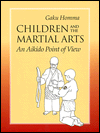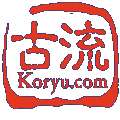Koryu.com Book Reviews
 Children and the Martial Arts: An Aikido Point of View.
Children and the Martial Arts: An Aikido Point of View.
By Gaku Homma.
Berkeley, CA: North Atlantic Books, 1993.
ISBN 1-55643-139-2. 8 x 10" paperbd.
Purchase from Amazon. (paid link)
Instructors who teach children, martial artists who have children, parents of children studying martial arts, parents of children who don't study martial arts, instructors who run their own dojo, instructors who'd like to run their own dojo--all will benefit from this thoughtful and well-designed book on children and martial arts study. Gaku Homma's concern for the overall education of children is evident on every page, and in fact, Part I is titled, "Martial arts training as an educational tool." In addition to a thorough explanation of what aikido is, and what it can do for children, this section is full of anecdotes from Homma's childhood in Japan and his extensive experience as a teacher of children. He offers a wealth of sensible suggestions on how to deal with both the kids (leave time for free play before class, change activities often, and turn as much training as possible into a game), and their parents (no watching class, no helping students with shoes and dressing, no unreasonable expectations). He creatively combines many aspects of his Japanese upbringing with the better features of American child-rearing into a comprehensive and compassionate method of instilling discipline, confidence, responsibility, and respect for others into his young students. Although not all will agree with his contention that aikido is the only martial art inherently suited to children, he argues his points effectively. However, he does overlook a few important matters. In his analysis of the physical dangers of "kicking-punching" arts such as karate and tae kwon do, he neglects to mention the possibilities of damage to not-yet-fully-formed joints that can occur as the result of roughly applied aikido technique. In his dojo, however, this evidently rarely (if ever?) happens, since he stresses the cooperative/partner side of aikido in a way which seems entirely appropriate for children.
The second portion of the book describes physical exercises, aiki warm-ups, some basic kamae, approaches (he prefers not to use the term "attack"), and techniques, as well as games which he has found over the years to be successful. Illustrated with cheerful, if occasionally bordering on the cutesy, line drawings, the explanations are clear, simple, and are accompanied by useful dialogues and stories the instructor may find helpful when teaching a specific technique or concept.
All in all, Children and the Martial Arts is an excellent book for all martial artists involved with children and all parents with children who have an interest in the martial arts.
Diane Skoss
This review first appeared in Aiki News #97, vol. 20 no 3, Fall/Winter 1993.

Contact Koryu.com
Last modified on October 23, 2019
URL: https://koryu.com /books/children.html
Copyright ©2022 Koryu Books. All rights reserved.
